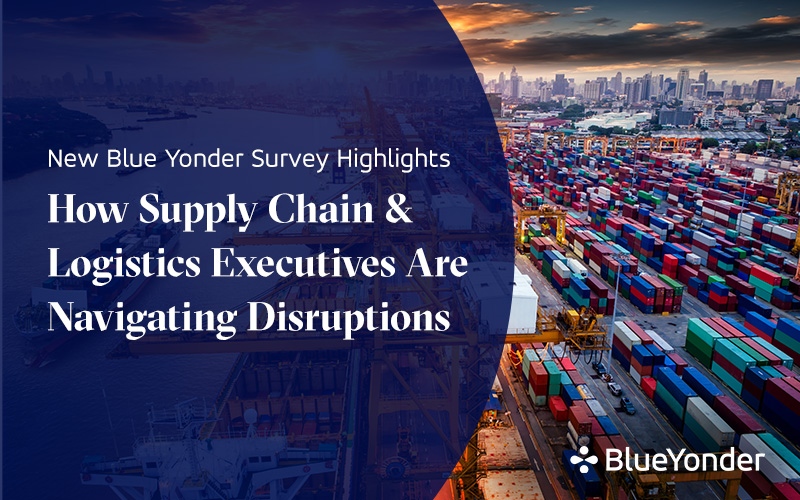Logistics Executives Survey Offers Latest Insights on Customer Experience and Disruptions
While every industry has experienced its share of challenges in the wake of the COVID-19 pandemic, the end-to-end supply chain and global and regional logistics operations have been forever transformed by the events of the last two years.
Since supply chain volatility seems unlikely to go away, we at Blue Yonder wondered, “What are logistics executives’ top strategies for managing disruption? How important is customer experience versus other performance indicators such as cost to serve or sustainability?”
To answer those and other hot topics, Blue Yonder partnered with a third-party provider to conduct a survey of 150 C-suite and senior executives across manufacturing, retail, third-party logistics (3PL), transportation, and warehousing, with responsibility for logistics and manufacturing operations in the U.S. To capture evolving trends, Blue Yonder compared the results of this survey with a similar study of logistics executives conducted in April 2021.
Key Study Highlights
Below are a few highlights that I hope will interest you to review the infographics and full report:
- In the new study, nearly all respondents (88%) reported that their companies experienced disruption over the last year.
- Improving the customer experience is a top priority.
- Digital solutions are critical in combatting labor shortages and other gaps.
- Over half of supply chain executives (56%) said investment in their organization’s supply chain has increased over the last year, and of those, half (50%) invested $6 million or more.
- The need for new solutions continues.
Proactively Combating Disruptions
Of the organizations that faced disruption, the biggest impact on supply chains were customer-facing delays (58%) and staff shortages (43%). However, some logistics executives described their supply chains as “reliable” in the face of disruption. This is encouraging evidence that many organizations are beginning to adapt to the new normal of disruptions.
Customer Experience
Commerce has changed dramatically, resulting in increasing competition, the emergence of omni-channel fulfillment models, and aggressive delivery promises.
When asked about their key initiatives for the future, it’s not surprising that the majority of executives are prioritizing improvements related to customer service. Over half the executives mentioned that ensuring inventory availability for high-demand products is the most important and slightly less than half of the respondents cited consistent on-time delivery is the most important.
The Need for Digital Transportation, Warehouse and AI/ML Solutions
To speed up omni-channel fulfillment, retailers, manufacturers, and 3PLs are investing in Warehouse Management Systems (WMS), Transportation Management Systems (TMS), and AI/ML solutions. They are adopting them to combat labor shortages, as well as improving the handling of e-commerce orders and cost-to-serve.
Because these advanced technologies exceed the cognitive speed and scope of human analysts, they can help logistics teams analyze and leverage huge volumes of real-time data and quickly make profitable and intelligent decisions.
Looking into the Near Future
While many companies made decisions on the fly at the height of the pandemic, today their increasing investments in digitalization are positioning them to take a more strategic, measured, fact-based approach — while still responding quickly to upstream and downstream volatility.
With unified logistics, end-to-end exception visualization, prioritization, autonomous resolution, and easy access to carrier and supplier networks, the vision of the entire logistics network being able to course-correct in real time and update network-wide plans and execution to provide better business outcomes will soon be realized.
Tomorrow’s logistics leaders will be distinguished by their ability to not only master volatility, but leverage it to create an enormous advantage over less-prepared competitors.

